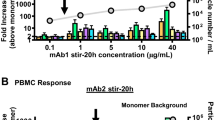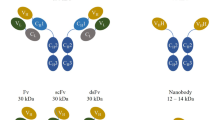Abstract
Granulocyte colony-stimulating factor (GCSF) stimulates the proliferation of neutrophils but it has low serum half-life. Therefore, the present study was done to investigate the effect of XTENylation on biological activity, pharmacokinetics, and pharmacodynamics of GCSF in a neutropenic rat model. XTEN tag was genetically fused to the N-terminal region of GCSF-encoding gene fragment and subcloned into pET28a expression vector. The cytoplasmic expressed recombinant protein was characterized through intrinsic fluorescence spectroscopy (IFS), dynamic light scattering (DLS), and size exclusion chromatography (SEC). In vitro biological activity of the XTEN-GCSF protein was evaluated on NFS60 cell line. Hematopoietic properties and pharmacokinetics were also investigated in a neutropenic rat model. An approximately 140 kDa recombinant protein was detected on SDS-PAGE. Dynamic light scattering and size exclusion chromatography confirmed the increase in hydrodynamic diameter of GCSF molecule after XTENylation. GCSF derivatives showed efficacy in proliferation of NFS60 cell line among which the XTEN-GCSF represented the lowest EC50 value (100.6 pg/ml). Pharmacokinetic studies on neutropenic rats revealed that XTEN polymer could significantly increase protein serum half-life in comparison with the commercially available GCSF molecules. PEGylated and XTENylated GCSF proteins were more effective in stimulation of neutrophils compared to the GCSF molecule alone. XTENylation of GCSF represented promising results in in vitro and in vivo studies. This approach can be a potential alternative to PEGylation strategies for increasing serum half-life of protein.






Similar content being viewed by others
Data Availability
Not applicable.
References
Lyman, G. H., Abella, E., & Pettengell, R. (2014). Risk factors for febrile neutropenia among patients with cancer receiving chemotherapy: A systematic review. Critical Reviews in Oncology/Hematology, 90, 190–199.
Newburger, P. E., & Dale, D. C. (2013). Evaluation and management of patients with isolated neutropenia. Seminars in Hematology, 50, 198–206.
Schneider, A., Kuhn, H. G., & Schabitz, W. R. (2005). A role for G-CSF (granulocyte-colony stimulating factor) in the central nervous system. Cell Cycle, 4, 1753–1757.
Dwivedi, P., & Greis, K. D. (2017). Granulocyte colony-stimulating factor receptor signaling in severe congenital neutropenia, chronic neutrophilic leukemia, and related malignancies. Experimental Hematolology, 46, 9–20.
Pollmächer, T., Korth, C., Schreiber, W., Hermann, D., & Mullington, J. (1996). Effects of repeated administration of granulocyte colony-stimulating factor (G-CSF) on neutrophil counts, plasma cytokine, and cytokine receptor levels. Cytokine, 8, 799–803.
Kumari, M., Sahni, G., & Datta, S. (2020). Development of site-specific PEGylated granulocyte colony stimulating factor with prolonged biological activity. Frontiers in Bioengineering and Biotechnology, 8, 572077.
Zhao, S., Zhang, Y., Tian, H., Chen, X., Cai, D., Yao, W., & Gao, X. (2013). Extending the serum half-life of G-CSF via fusion with the domain III of human serum albumin. BioMed Research International, 2013, 107238.
Do, B. H., Kang, H. J., Song, J-A., Nguyen, M. T., Park, S., Yoo, J., Nguyen, A. N., Kwon, G. G., Jang, J., Jang, J., Lee, S., So, S., Sim, S., Lee, K. J., Osborn, M. J., & Choe, H. (2017). Granulocyte colony-stimulating factor (GCSF) fused with Fc domain produced from E. coli is less effective than polyethylene glycol-conjugated GCSF. Scientific Reports, 7, 6480.
Tanaka, H., Satake-Ishikawa, R., Ishikawa, M., Matsuki, S., & Asano, K. (1991). Pharmacokinetics of recombinant human granulocyte colony-stimulating factor conjugated to polyethylene glycol in rats. Cancer Research, 51, 3710–3714.
Halpern, W., Riccobene, T. A., Agostini, H., Baker, K., Stolow, D., Gu, M. L., Hirsch, J., Mahoney, A., Carrell, J., Boyd, E., & Grzegorzewski, K. J. (2002). Albugranin™, a recombinant human granulocyte colony stimulating factor (G-CSF) genetically fused to recombinant human albumin induces prolonged myelopoietic effects in mice and monkeys. Pharmaceutical Research, 19, 1720–1729.
van der Auwera, P., Platzer, E., Xu, Z. X., Schulz, R., Feugeas, O., Capdeville, R., & Edwards, D. J. (2001). Pharmacodynamics and pharmacokinetics of single doses of subcutaneous pegylated human G-CSF mutant (Ro 25–8315) in healthy volunteers: Comparison with single and multiple daily doses of filgrastim. American Journal of Hematolology., 66, 245–251.
Strohl, W. R. (2015). Fusion proteins for half-life extension of biologics as a strategy to make biobetters. BioDrugs. 29, 215–239.
Bendele, A., Seely, J., Richey, C., Sennello, G., & Shopp, G. (1998). Short communication: Renal tubular vacuolation in animals treated with polyethylene-glycol-conjugated proteins. Toxicological Sciences, 42, 152–157.
He, X., Yin, H. L., Wu, J., Zhang, K., Liu, Y., Yuan, T., Rao, H. L., Li, L., Yang, G., & Zhang, X. M. (2011). A multiple-dose pharmacokinetics of polyethylene glycol recombinant human interleukin-6 (PEG-rhIL-6) in rats. Journal of Zhejiang University Scieince B, 12, 32–39.
Schlapschy, M., Binder, U., Borger, C., Theobald, I., Wachinger, K., Kisling, S., Haller, D., & Skerra, A. (2013). PASylation: A biological alternative to PEGylation for extending the plasma half-life of pharmaceutically active proteins. Protein Engineering Design and Selection, 26, 489–501.
Mazaheri, S., Talebkhan, Y., Mahboudi, F., Nematollahi, L., Cohan, R. A., MirabzadehArdakani, E., Bayat, E., Sabzalinejad, M., Sardari, S., & Torkashvand, F. (2020). Improvement of certolizumab fab′ properties by PASylation technology. Scientific Reports, 10, 18464.
Bech, E. M., Pedersen, S. L., & Jensen, K. J. (2018). Chemical strategies for half-life extension of biopharmaceuticals: Lipidation and its alternatives. ACS Medicinal Chemistry Letters, 9, 577–580.
Ding, S., Song, M., Sim, B.-C., Gu, C., Podust, V. N., Wang, C.-W., McLaughlin, B., Shah, T. P., Lax, R., Gast, R., Sharan, R., Vasek, A., Hartman, M. A., Deniston, C., Srinivas, P., & Schellenberger, V. (2014). Multivalent antiviral XTEN–Peptide conjugates with long in vivo half-life and enhanced solubility. Bioconjugate Chemistry, 25, 1351–1359.
Geething, N. C., To, W., Spink, B. J., Scholle, M. D., Wang, C., Yin, Y., Yao, Y., Schellenberger, V., Cleland, J. L., Stemmer, W. P. C., & Silverman, J. (2010). Gcg-XTEN: An improved glucagon capable of preventing hypoglycemia without increasing baseline blood glucose. PLoS One, 5,
Podust, V. N., Balan, S., Sim, B.-C., Coyle, M. P., Ernst, U., Peters, R. T., & Schellenberger, V. (2016). Extension of in vivo half-life of biologically active molecules by XTEN protein polymers. Journal of Controlled Release, 240, 52–66.
Schellenberger, V., Wang, C., Geething, N. C., Spink, B. J., Campbell, A., To, W., Scholle, M. D., Yin, Y., Yao, Y., Bogin, O., Cleland, L., Silverman, J., & Stemmer, W. P. C. (2009). A recombinant polypeptide extends the in vivo half-life of peptides and proteins in a tunable manner. Nature Biotechnology, 27, 1186–1190.
Varanko, A., Saha, S., & Chilkoti, A. (2020). Recent trends in protein and peptide-based biomaterials for advanced drug delivery. Advanced Drug Delivery Reviews, 156, 133–187.
Alters, S. E., McLaughlin, B., Spink, B., Lachinyan, T., Wang, C., Podust, V., Schellenberger, V., & Stemmer, W. P. C. (2012). GLP2-2G-XTEN: A pharmaceutical protein with improved serum half-life and efficacy in a rat Crohn’s disease model. PLoS One, 7,
Amatya, R., Park, T., Hwang, S., Yang, J., Lee, Y., Cheong, H., Moon, C., Kwak, H. D., Min, K. A., & Shin, M. C. (2020). Drug delivery strategies for enhancing the therapeutic efficacy of toxin-derived anti-diabetic peptides. Toxins, 12, 313.
Moore, W. V., Nguyen, H. J., Kletter, G. B., Miller, B. S., Rogers, D., Ng, D., Moore, J. A., Humphriss, E., Cleland, J. L., & Bright, G. M. (2016). A randomized safety and efficacy study of somavaratan (VRS-317), a long-acting rhGH, in pediatric growth hormone deficiency. The Journal of Clinical Endocrinology and Metabolism, 101, 1091–1097.
NICE. Neutropenic sepsis : Prevention and management in people with cancer. NICE Guidel. 2012;1–31.
Zamboni, W. C. (2003). Pharmacokinetics of pegfilgrastim. Pharmacotherapy, 23, 9S-14S.
Rosano, G. L., & Ceccarelli, E. A. (2014). Recombinant protein expression in Escherichia coli: Advances and challenges. Frontiers in Microbiology, 5, 172.
Baeshen, M. N., Al-Hejin, A. M., Bora, R. S., Ahmed, M. M. M., Ramadan, H. A. I., Saini, K. S., Baeshen, N. A., & Redwan, E. M. (2015). Production of biopharmaceuticals in E. coli: Current scenario and future perspectives. Journal of Microbiology and Biotechnology, 25, 953–962.
Tryggvason, K., & Wartiovaara, J. (2005). How does the kidney filter plasma? Physiology, 20, 96–101.
Hagel, L. (1998). in Current protocols in molecular biology: Gel-filtration chromatography. Wiley, New York, pp. 10.9.1–10.9.2.
Mickiene, G., Dalgediene, I., Dapkunas, Z., Zvirblis, G., Pesliakas, H., Kaupinis, A., Valius, M., Mistiniene, E., & Pleckaityte, M. (2017). Construction, purification, and characterization of a homodimeric granulocyte colony-stimulating factor. Molecular Biotechnology, 59, 374–384.
Ghisaidoobe, A., & Chung, S. J. (2014). Intrinsic tryptophan fluorescence in the detection and analysis of proteins: A focus on Förster resonance energy transfer techniques. International Journal of Molecular Sciences, 15, 22518–22538.
Lakowicz, J. R. (2006). in Principles of fluorescence spectroscopy (pp. 529–579). Springer.
Koenig, S., Müller, L., & Smith, D. K. (2001). Dendritic biomimicry: Microenvironmental hydrogen-bonding effects on tryptophan fluorescence. Chemistry, 7, 979–986.
Huang, Y.-S., Wen, X.-F., Yang, Z.-Y., Wu, Y.-L., Lu, Y., & Zhou, L.-F. (2014). Development and characterization of a novel fusion protein of a mutated granulocyte colony-stimulating factor and human serum albumin in Pichia pastoris. PLoS One, 9,
Mero, A., Grigoletto, A., Maso, K., Yoshioka, H., Rosato, A., & Pasut, G. (2016). Site-selective enzymatic chemistry for polymer conjugation to protein lysine residues: PEGylation of G-CSF at lysine-41. Polymer Chemistry, 7, 6545–6553.
Stetefeld, J., McKenna, S. A., & Patel, T. R. (2016). Dynamic light scattering: A practical guide and applications in biomedical sciences. Biophysical Reviews, 8, 409–427.
Wadhwa, M., Bird, C., Dougall, T., Rigsby, P., Bristow, A., Thorpe, R., & participants of the study. (2015). Establishment of the first international standard for PEGylated granulocyte colony stimulating factor (PEG-G-CSF): Report of an international collaborative study. Journal of Immunological Methods, 416, 17–28.
Kang, J. S., & Lee, K. C. (2013). In vivo pharmacokinetics and pharmacodynamics of positional isomers of mono-PEGylated recombinant human granulocyte colony stimulating factor in rats. Biological & Pharmaceutical Bulletin, 36, 1146–1151.
Mehta, H. M., Malandra, M., & Corey, S. J. (2015). G-CSF and GM-CSF in neutropenia. The Journal of Immunology, 195, 1341–1349.
Acknowledgements
The authors wish to express their deep gratitude to all who provided deep technical supports.
Funding
This project was supported by Pasteur Institute of Iran and the Biotechnology Development Headquarter of the Vice-Presidency for Science & Technology, Tehran, Iran.
Author information
Authors and Affiliations
Contributions
YT, LN, and YHA: Design the study and revise of the manuscript. FYN: Major experimental work, data analysis, and contribution in writing the manuscript. PGh, EB, ShD, and HAMA: Contribution in experimental work. EM: Contribution in animal studies.
Corresponding authors
Ethics declarations
Ethics Approval
All experiments and procedures were approved by the Ethics Committee of Pasteur Institute of Iran (IR.PII.REC.1399.013) and performed in accordance with the approved guidelines and regulations.
Conflict of Interest
The authors declare no competing interests.
Additional information
Publisher's Note
Springer Nature remains neutral with regard to jurisdictional claims in published maps and institutional affiliations.
Supplementary Information
Below is the link to the electronic supplementary material.

Fig. S1
Western blotting using HRP conjugated rabbit anti-His antibody. #1, 2: Recombinant E. coli cell lysates before and after induction; #3, 4: Purified XTEN-GCSF samples; M: Pre-stained protein molecular weight marker. (PNG 88 kb)
Fig. S2
Dynamic light scattering histogram. Assessment of the size of GCSF derivatives. (PNG 760 kb)

Fig. S3
Blood counting of rats received single doses of GCSF derivatives. (a) Filgrastim; (b) PEG-Filgrastim; (c) XTEN-GCSF. Data are means ± SE SD of 3 random rats/group on a linear scale. Bars represent the SD values. (PNG 17 kb)

Rights and permissions
Springer Nature or its licensor (e.g. a society or other partner) holds exclusive rights to this article under a publishing agreement with the author(s) or other rightsholder(s); author self-archiving of the accepted manuscript version of this article is solely governed by the terms of such publishing agreement and applicable law.
About this article
Cite this article
Nikravesh, F.Y., Gholami, P., Bayat, E. et al. Expression, Purification, and Biological Evaluation of XTEN-GCSF in a Neutropenic Rat Model. Appl Biochem Biotechnol 196, 804–820 (2024). https://doi.org/10.1007/s12010-023-04522-w
Accepted:
Published:
Issue Date:
DOI: https://doi.org/10.1007/s12010-023-04522-w




